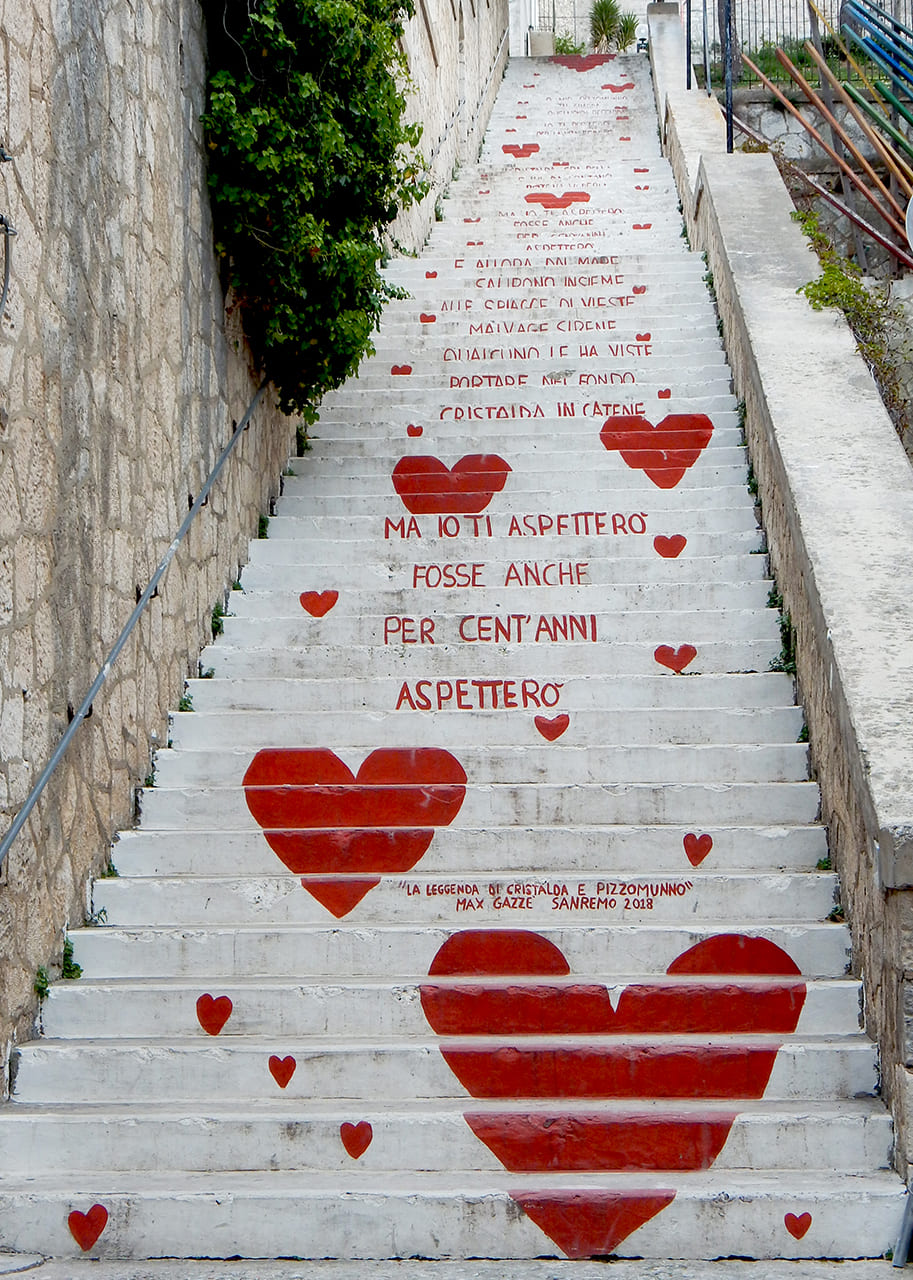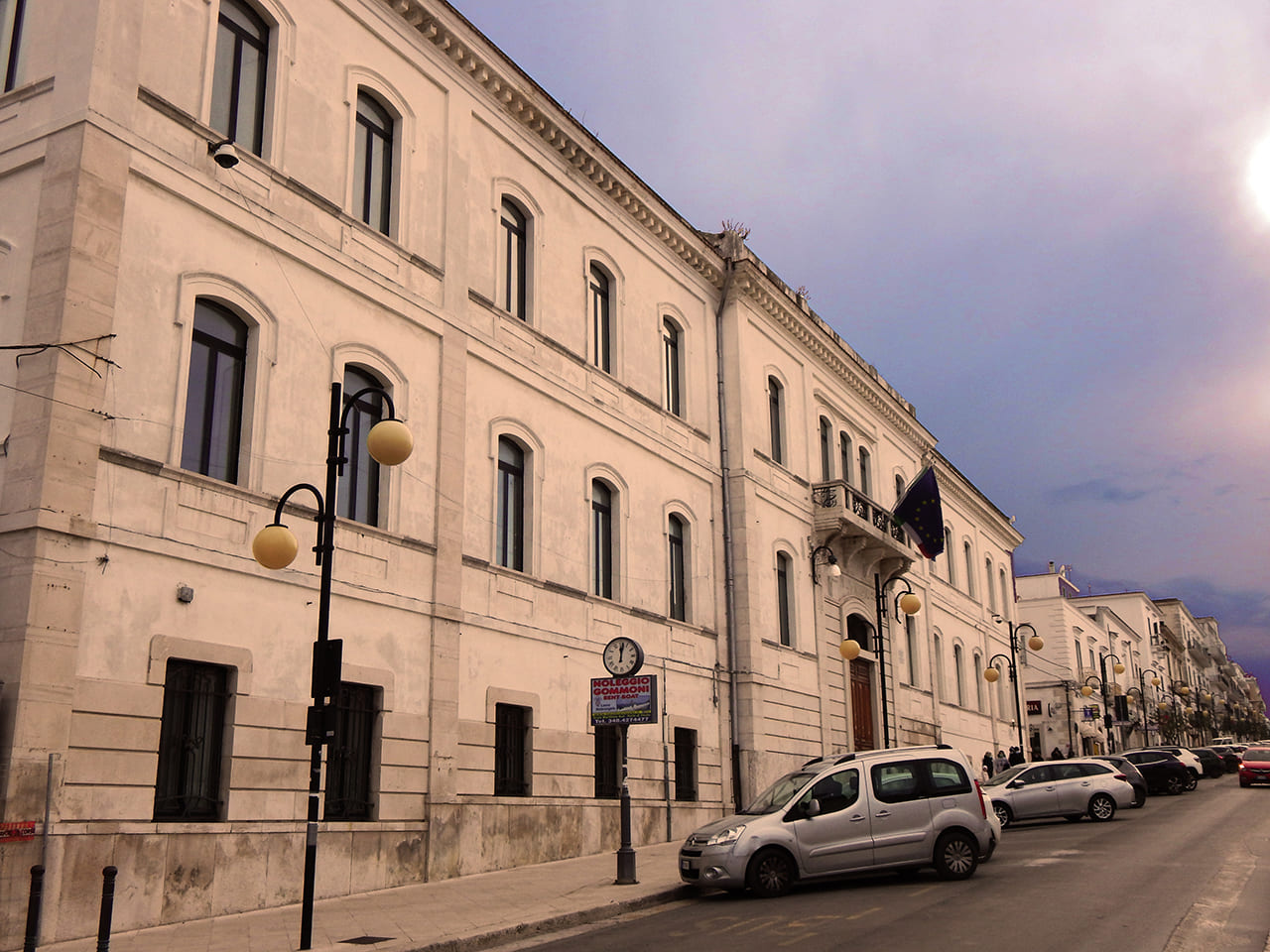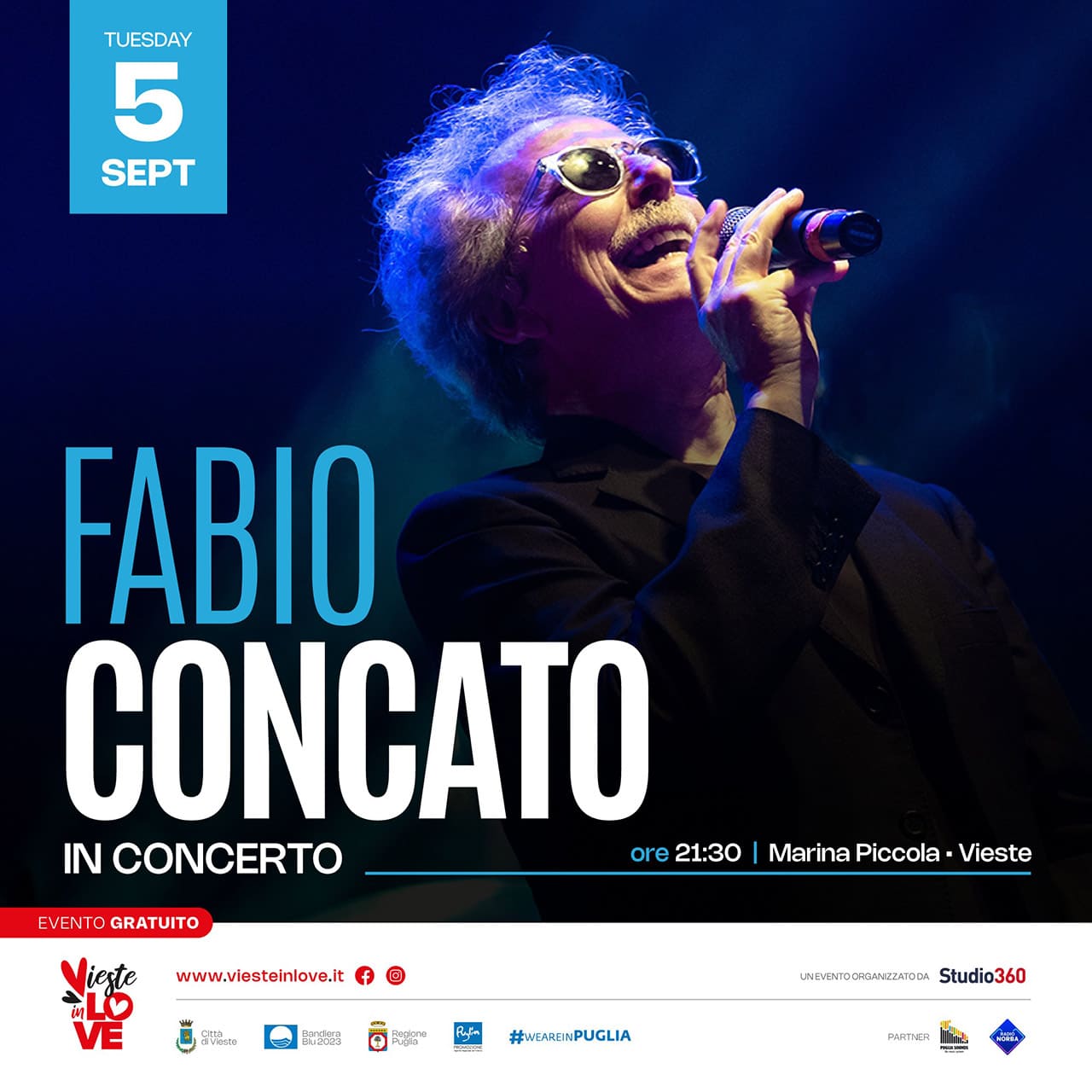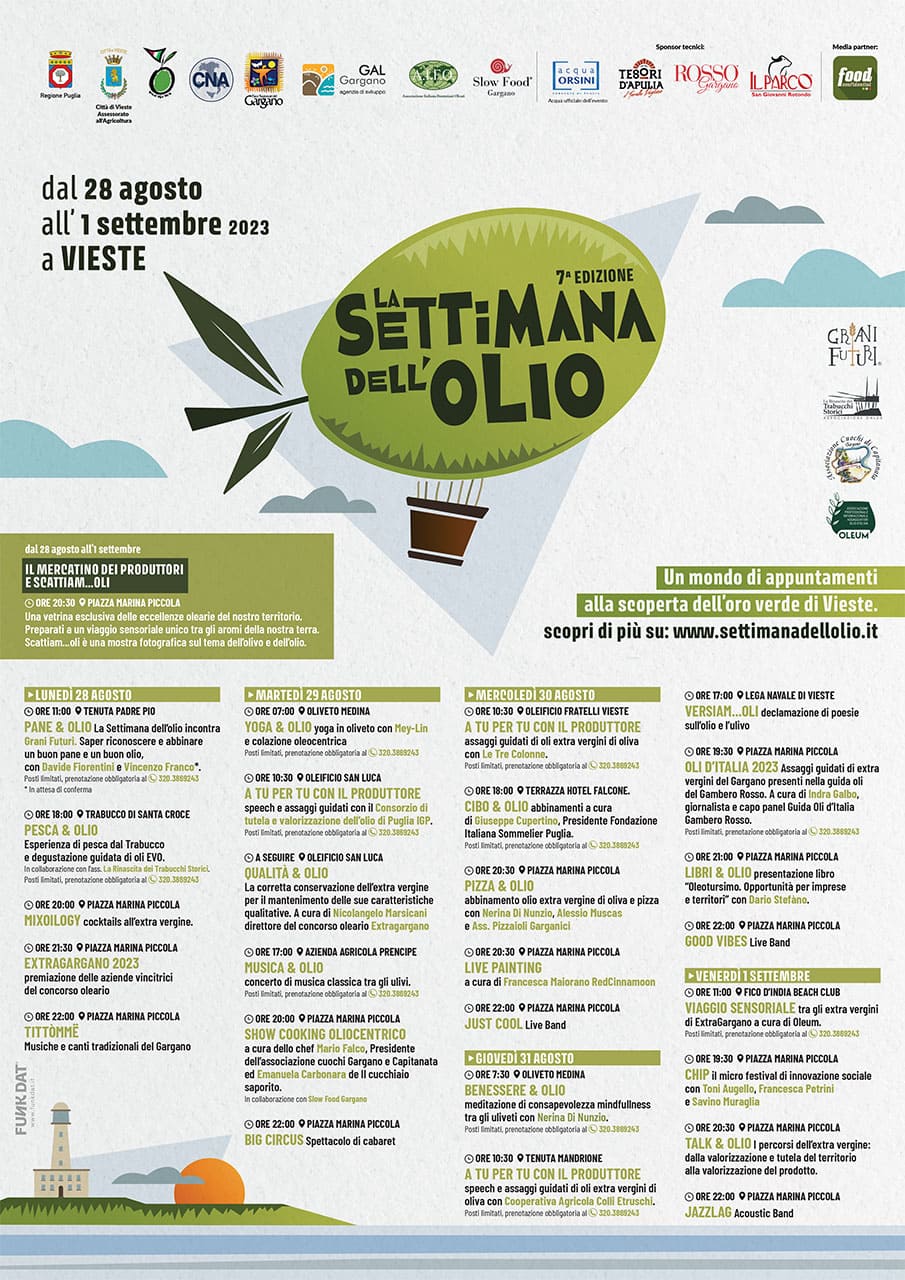Il primo lotto di costruzione del Palazzo Comunale di Vieste fu inaugurato il 15 Agosto 1926, successivamente, a cavallo degli anni ’50 e ’60 l’imponente costruzione verrà completata nelle due ali laterali. L’opera suddetta venne deliberata dall’Amministrazione capeggiata dal Sindaco Domenicantonio Spina che durò in carica dal 1899 al 1909. Realizzato su progetto dell’ ing. Francesco Priore, l’opera venne eseguita dopo un lungo iter amministrativo che prevedeva l’approvazione del Ministero della Pubblica Istruzione. I lavori furono posticipati da eventi eccezionali: la prima Guerra Mondiale e l’avvento del Fascismo; ma alla fine l’edificio comunale, con le annesse Scuole Elementari, si realizzò. I lavori per la costruzione iniziarono nel 1923 con la costruzione del corpo centrale e furono completati nei due anni successivi su un terreno arenoso ben esposto igienicamente, e lontano da attività rumorose. Negli anni successivi si eseguirono i lavori di completamento dell’edificio con la sistemazione delle scuole dell’obbligo lungo le altre due ali laterali per poi chiudere l’anello del fabbricato successivamente. Con l’insediamento dell’amministrazione comunale guidata da Medina furono progettate le due scalinate laterali al palazzo comunale che da Corso Lorenzo Fazzini portano a Corso Cesare Battisti, fu realizzato anche il muraglione retrostante per arginare il declivio franoso del cosiddetto “Montarone” piantando anche una piccola pineta. Il 5 Luglio 2006, durante dei lavori per la realizzazione di una cisterna all’interno della corte del palazzo comunale, a tre metri di profondità, fu scoperta per caso una tomba il cui corredo oggi si conserva nel Museo Archeologico di Vieste. Accanto al palazzo comunale vi è anche la Scalinata dell’Amore realizzata nel 2019 dalla Giunta Comunale dei ragazzi per celebrare l’amore di Cristalda e Pizzomunno con i versi della canzone omonima di Max Gazzè.
The first batch of construction of the Town Hall of Vieste was inaugurated on August 15, 1926, then, at the turn of the 50’s and 60’s the palace will be completed in the two side wings. The building of the Town Hall was decided by the Administration headed by Domenicantonio Spina who lasted in office from 1899 to 1909. Realized on the project of Francesco Priore, the work was carried out after a long administrative process which included the approval of the Ministry of Education. The work was postponed by exceptional events: the First World War and the advent of Fascism; but in the end the municipal building, with the adjoining Primary Schools, was built. In the following years works was carried out to complete the building until to close the ring later. With the installation of the municipal administration led by Medina were designed the two side stairways to the town hall leading from Corso Lorenzo Fazzini to Corso Cesare Battisti, the rear wall was also built to stem the landslide slope of the so-called “Montarone” by planting a small pine forest. On July 5, 2006, during the construction of a cistern inside the courtyard of the town hall, at a depth of three metres, a tomb was discovered by chance, whose equipment is now preserved in the Archaeological Museum of Vieste. Next to the town hall there is also the Love Stairway , created in 2019 by the City Council of Boys to celebrate the love of Cristalda and Pizzomunno with the verses of the homonymous song by Max Gazzè.

MULTIMEDIALE
La strada che porta ai 157 gradini della Scalinata dell’Amore è dedicata a Pasquale Petrone, primo deputato viestano del neonato Regno d’Italia. Eletto nel Marzo del 1867 aderì al gruppo liberale di sinistra capeggiato da Francesco Crispi e dai sostenitori di Garibaldi, a cui era legato da una forte amicizia al punto da fargli battezzare il figlio Nicola. Pasquale Petrone partecipò attivamente ai lavori parlamentari e dedicò tutte le sue energie alla risoluzione dei gravi problemi del Sud. Fu tra gli autori di un disegno di legge per la realizzazione del porto di Manfredonia e di uno per la realizzazione di molte strade comunali sul Gargano. La sua attività parlamentare terminò, per motivi di salute, nel Giugno del 1870 a pochi mesi dalla sua morte avvenuta a Firenze il 20 Ottobre successivo. Sempre in via Deputato Petrone numero civico 4, oggi 7, il 2 Febbraio del 1902 nasce Pier Luigi Torre l’inventore della Lambretta. Amante della matematica, riesce presto a laurearsi appena ventenne alla facoltà di Ingegneria Meccanica ed Elettronica a Milano ma la sua grande passione per gli aerei e la velocità lo porta a conseguirne una seconda in Aeronautica a Torino. Negli anni Venti, è, insieme all’ingegnere Marchetti, il progettista dell’idrovolante Savoia Marchetti S 55 usato per compiere la celebre seconda trasvolata atlantica di Italo Balbo del 1933. Diversi sono i progetti pionieristici di Pier Luigi Torre tra i quali c’è il brevetto di un sistema di registrazione automatico dei dati di volo che può venire considerato come il precursore della scatola nera. Nel 1946 viene contattato dall’ingegnere Ferdinando Innocenti per lavorare nei suoi stabilimenti e d questa collaborazione Torre progetta la Lambretta che, prodotta dal 1947, diventerà presto un successo mondiale. Pier Luigi Torre muore a Milano nel 1989.
The road leading to the 157 steps of the Love Stairway is dedicated to Pasquale Petrone, the first deputy of the newborn Kingdom of Italy. Elected in March 1867, he joined the liberal left group headed by Francesco Crispi and Garibaldi’s supporters, to which he was bound by a strong friendship to the point of having his son Nicola baptized. Pasquale Petrone took an active part in the parliamentary work and devoted all his energies to solving the serious problems of the South of Italy. He was among the authors of a bill for the construction of the harbour of Manfredonia and for the construction of many municipal roads on the Gargano. His parliamentary activity ended, for health reasons, in June 1870 a few months. Pasquale Petrone died in Florence on October 20 1870. Also in via Deputato Petrone street number 4, today 7, on February 2, 1902 was born Pier Luigi Torre, the inventor of the Lambretta. A lover of mathematics, he soon managed to graduate at the age of twenty at the Faculty of Mechanical and Electronic Engineering in Milan, but his great passion for aircraft and speed led him to obtain a second degree in aeronautics in Turin. In the 1920s, he was, together with engineer Marchetti, the designer of the Savoia Marchetti seaplane S 55 used for Italo Balbo’s famous second Atlantic flight in the 1933. Several are the pioneering projects of Pier Luigi Torre among which there is the patent of a system of automatic recording of flight data which can be considered as the precursor of the black box. In 1946 he was contacted by the engineer Ferdinando Innocenti to work in his plants. From this collaboration Torre designed the Lambretta produced in 1947. Pier Luigi Torre died in Milan in 1989.
Die Straße, die zur “Treppe der Liebe” führt, ist Pasquale Petrone gewidmet, dem ersten Parlamentarier aus Vieste der neugeborenen Regierung Italiens.. Er war im März 1867 mit der linksliberalen Partei unter der Führung von Francesco Crispi und Anhängern von Garibaldi, Petrones gutem Freund, der seinen Sohn Nicola taufte, gewählt worden. Er war ein aktiver Politiker und konzentrierte sich auf die Lösung der Hauptprobleme Süditaliens. Er war einer der Autoren der Gesetzentwürfe für den Bau des neuen Hafens von Manfredonia und neuer Straßen in Gargano gewesen. Seine Karriere im Parlament endete im Juni 1870 wegen gesundheitlicher Probleme und er starb am 20. Oktober in Florenz. Pier Luigi Torre, der Erfinder der Lambretta, wurde am 2. Februar 1902 in der Via Deputato Petrone Nr. 4, jetzt 7, geboren. Als Liebhaber der Mathematik absolvierte er ein Ingenieurstudium in Mechanik und Elektrotechnik in Mailand und anschließend ein Studium der Flugtechnik in Turin, da er die Leidenschaft für Flugzeuge hatte. Er entwarf 1920 mit dem Ingenieur Marchetti das Wasserflugzeug Savoia Marchetti S 55, das 1933 für den berühmten Transatlantikflug von Italo Balbo eingesetzt wurde. Pier Luigi Torre erfand das System der automatischen Registrierung der Flugdaten, den Vorläufer der Black Box. 1946 begann er für den Ingenieur Ferdinando Innocenti zu arbeiten und entwarf die ab 1947 hergestellte Lambretta, die zu einem internationalen Erfolg wurde. Pier Luigi Torre starb 1989 in Mailand.















